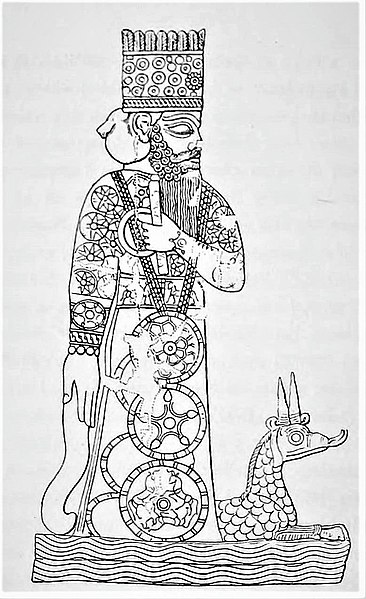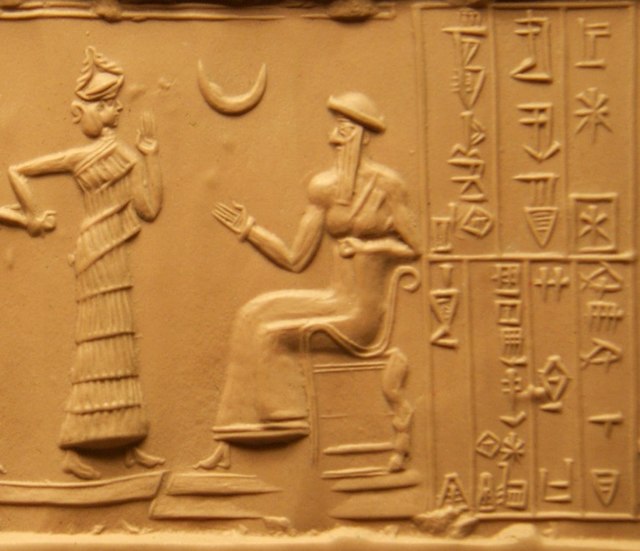The mušḫuššu or mushkhushshu is a creature from ancient Mesopotamian mythology. A mythological hybrid, it is a scaly animal with hind legs resembling the talons of an eagle, lion-like forelimbs, a long neck and tail, two horns on its head, a snake-like tongue, and a crest. The mušḫuššu most famously appears on the Ishtar Gate of the city of Babylon, dating to the sixth century BCE.
Mušḫuššu
Mušḫuššu bas-relief in the Pergamon Museum
9th century BCE depiction of the Statue of Marduk, with his servant dragon Mušḫuššu at his feet. This was Marduk's main cult image in Babylon.
Late Assyrian seal from the 8th century BCE showing a worshipper between Nabu and Marduk, standing on their servant dragon Mušḫuššu.
Ancient Mesopotamian religion
Mesopotamian religion refers to the religious beliefs and practices of the civilizations of ancient Mesopotamia, particularly Sumer, Akkad, Assyria and Babylonia between circa 6000 BC and 400 AD. The religious development of Mesopotamia and Mesopotamian culture in general, especially in the south, were not particularly influenced by the movements of the various peoples into and throughout the area. Rather, Mesopotamian religion was a consistent and coherent tradition, which adapted to the internal needs of its adherents over millennia of development.
The god Marduk and his dragon Mušḫuššu
The "Burney Relief", which is speculated to represent either Ishtar or her older sister Ereshkigal (c. 19th or 18th century BCE)
Impression of the cylinder seal of Ḫašḫamer, ensi. The seated figure is probably king Ur-Nammu, bestowing the governorship on Ḫašḫamer, who is led before him by the goddess Lamma. Nanna himself is indicated in the form of a crescent (c. 2100 BCE)






